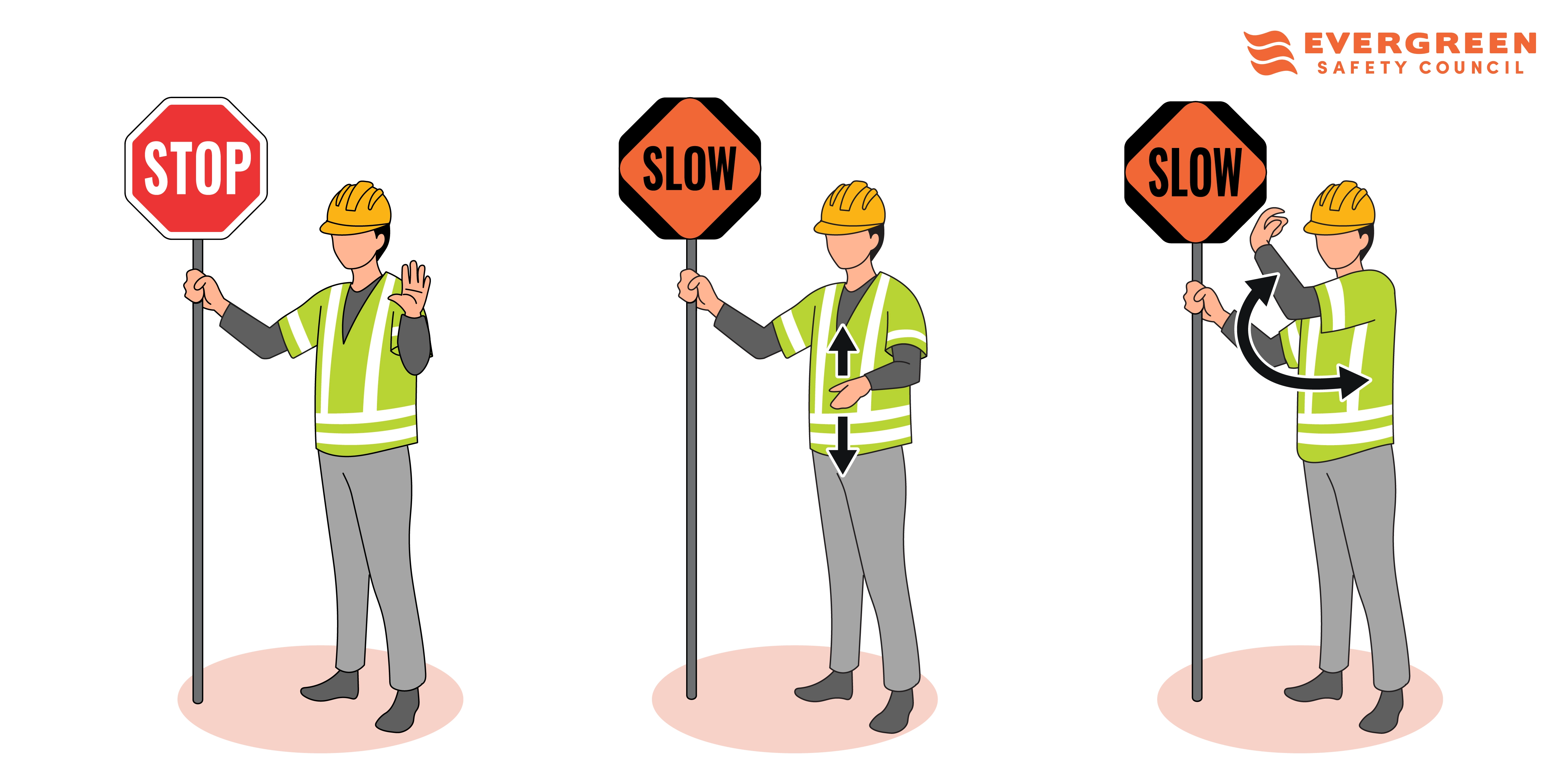Published on

One of the most important skills you’ll use when working as a flagger is signaling with the STOP/SLOW paddle. Here are a few tips to get you up to speed, while slowing traffic down.
Before you begin flagging, make sure your STOP/SLOW paddle meets the requirements set by the MUTCD. The STOP/SLOW sign must be at least 18 inches in diameter, and it should be mounted on a staff that makes it tall enough to be seen by approaching traffic. We recommend a staff height of 6 to 7 feet.
Always make sure your paddle is clean and legible. If you will be signaling during hours of darkness, it is recommended that you use a 24-inch paddle to increase visibility.
Note that some states and local jurisdictions may have additional requirements for STOP/SLOW paddles, especially if they are used during hours of darkness. For instance, in Washington State, the sign face must be retroreflective.
Flaggers should never stand in the lane of traffic. Position yourself on the shoulder or in a closed lane. Make sure you have a clear route of escape, in case a vehicle threatens your safety.
Stand so that the STOP/SLOW paddle is between you and the lane of traffic you’re signaling to. Hold the paddle with your arm extended horizontally away from your body. Your feet should be positioned perpendicular to the paddle, so that you can easily look behind you.
Road users are easily confused in work zones, so it is vitally important that your motions are clear to drivers. When signaling, don’t hesitate — be firm, courteous, and confident.
There are three basic signals that you will use to communicate with road users: STOP, PROCEED, and SLOW. These specific signals are required by the MUTCD.
To signal for vehicles to STOP:
To signal for vehicles to PROCEED:
To ALERT or SLOW traffic:
During hours of darkness or in low-visibility conditions, it is recommended that you signal using a flashlight with a red glow cone, in addition to the STOP/SLOW paddle.
Note that unless you are flagging during an emergency, the MUTCD requires that the flagger station be illuminated by floodlights.
Here are the gestures you should use when signaling with a flashlight.
To signal for vehicles to STOP:
To signal for vehicles to PROCEED:
To ALERT or SLOW traffic:
Signaling with a red flag is not always recommended, but some states require it. Learn all about signaling with a red flag in our article.
Reducing confusion for road users is one of your top priorities as a flagger. If you are new to flagging, it’s a good idea to practice these signals on your own until they become second nature.
Share this article

Evergreen Safety Council is proud to be endorsed by the American Association of Safety Councils and Specialized Carriers and Rigging Association.
We offer online, in-person, and private group training for each of our programs.
Choose an option below to get help with a class or a certification.
Need a new certification card? Fill out this form to request a replacement.
Download your materials, get help with your tech, or find out what you need to complete before the day of class.
Minimize downtime, disruption, and expense by having one of our experienced instructors train your staff, at your facility.
View our growing library of informative safety articles.
You have questions, we have answers. View commonly asked questions here.
Access your account page on our registration system or training portal.
Since 1932, we’ve been empowering people to achieve their potential by training them to stay safe on the road and on the job.